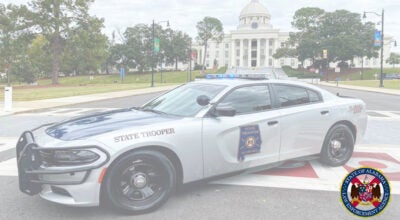Wrecked slave ship Clotilda identified near Mobile
Published 11:34 pm Wednesday, May 22, 2019
After a comprehensive assessment and months of research, the Alabama Historical Commission (AHC) is proud to announce the wreck of the Clotilda, the last known vessel to bring enslaved persons to the United States, has been identified.
For nearly 160 years, the waters around Mobile have concealed the final destination of the Gulf Schooner Clotilda. Residents of Africatown have carried the memory of their ancestors who were forcefully and violently migrated from Africa to the shores of Alabama. Since then, the final chapter of the Clotilda story has been shrouded in mystery.
From February to July 1860, the Clotilda illegally transported 110 people from Benin, Africa to Mobile, Alabama. This gross transgression took place 52 years after the United States banned the importation of enslaved people to the country. Co-conspirators, Timothy Meaher and Captain William Foster made an effort to evade authorities and destroy evidence of their criminal voyage by burning the vessel and dividing the Africans among their captors, where they remained in slavery until the end of the Civil War. A small band of the Clotilda passengers reunited post-war with the hopes of returning to Africa. When that dream was not realized, the survivors and their descendants established a new home for themselves in the Plateau area of Mobile – a community which is now known today as Africatown.
The Alabama Historical Commission, working in conjunction with the Black Heritage Council, National Geographic Society (NGS),Smithsonian National Museum of African American History & Culture (NMAAHC), the Slave Wrecks Project (SWP),Diving with a Purpose (DWP), and the National Park Service (NPS)., assembled a team of foremost experts in maritime archaeology led by Dr. James Delgado and SEARCH, INC to conduct archaeological assessment of a previously unsearched area of the Mobile River.
Initial historical research and archaeological survey revealed up to two dozen vessels from the 19th and 20th centuries.
The survey led to underwater excavation that revealed one wreck that closely matched some of the known characteristics of Clotilda. “Utilizing the latest scientific techniques and in-depth archival research, the team identified a target for further investigation and excavation,” said Eric Sipes, Senior Archaeologist with the State of Alabama.
After a year of study, including forensic analysis in SEARCH and National Geographic’s laboratories, consulting with other experts, exhaustive archival research into original documents, the scientific research concluded the wreck is likely Clotilda.
“We are cautious about placing names on shipwrecks that no longer bear a name or something like a bell with the ship’s name on it,” notes Delgado, “but the physical and forensic evidence powerfully suggests that this is Clotilda.”



